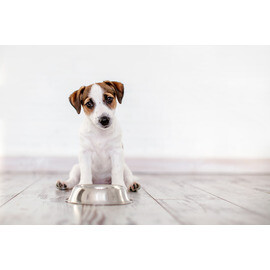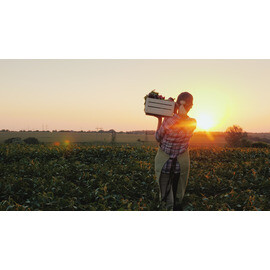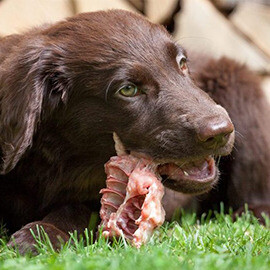Maintaining a healthy weight is one of the simplest—and most powerful—ways to support your pet’s overall wellbeing, especially when it comes to joint health. Whether you’ve got a dog, cat, or small furry friend, extra pounds can lead to serious issues down the line. In this blog, we’ll explore how weight impacts joint function, how to assess your pet’s condition, and how to adjust their raw diet to keep them lean, happy, and healthy.
When it comes to feeding dogs and cats a nutritionally balanced raw diet, Vitamin A plays a critical role in ensuring overall health and wellness. From vision to immune system support, this essential nutrient has a profound impact on your pet's well-being. But what is the best source of Vitamin A for dogs and cats, and why should it come from whole food sources rather than synthetic supplements? Let’s explore why Vitamin A in raw feeding is important, backed by scientific studies and expert recommendations.
So you’ve finally decided to feed a fresh, raw diet but the choice is overwhelming. Right here at Stefs, we work with 30+ raw manufactures, bringing us a choice of over 3000+ raw products. I’m hearing you, where do I start? If you’re at the very beginning, start with our starter guide. This is our new to raw section. Here we explain how to transition and what to feed. Our job is to help you find everything you need to nourish your pet.
Given the awareness month we are in, we thought we’d share our views on why the diet is so important for oral hygiene for dogs and cats, especially puppies and kittens! But not forgetting ferrets, rabbits and our many species of pets we choose to keep now-a-days. Although is blog is mainly about our beloved dogs, cats.
Does food affect your pet’s health?
You must have been hiding under a rock if you haven’t seen or heard the health benefits sweeping the nation relating to fresh food. But yet the only medical professionals still advising that fresh foods are damaging, are vets. All other health professionals are recommending that we eat less junk, highly processed, sugary foods.
Now the most popular way to feed our pets is with kibble. Why? Mainly because we believe our pets are receiving the correct nutrition from that bag. I’m sure 99.9% of people will have, at some point, fed kibble. This includes me, and yes I was hooked on the kibble claims too. In my opinion, their marketing is second to none. Really, there’s no expense spared on that.
So must of us will experience a fussy eater at some point in time. They could refuse something they have eaten for months, or turn their nose up at something the first time it’s offered, which means we usually don’t offer it again. Perhaps they’ve gone off food after being poorly, or what about a classic case of visiting a friend’s house who feeds kibble and your dog snaffles it all up, but once they’re home, they’re refusing their raw food?
Getting your puppy off to the right start Congratulations on your new bundle! I bet all you’re doing right now is taking lots of pictures and videos! (That’s going to come in very handy.)
Now you’ve got your little bundle home, it’s time to think about what you’re going to feed them. You might have already planned what you’d like to feed them, or you might be undecided and want some more information. That’s where I come in — I’m here to explain all.
The most important piece of information I can give you is that balance is achieved over time. This can be over a week or a month. So stop worrying, you don’t need to feed a complete, balanced meal every time. What was your last meal? Was it complete and balanced?
In fact I have never met anyone that achieves a perfectly balanced meal 365 days a year 2/3/4 meals a day. If you do have a perfect recipe, it becomes imperfect as feeding this alone wouldn’t give variety.
So whilst im writing this, my puppy (ok might be stretching the truth, she’s 9YO) is currently in the vets in a critical condition. This got me thinking about after care, what do we do? What do we feed? As usual i’m already preplanning what I will be feeding when she gets home. It’s keeping my mind busy to think about after care, while i feel hopeless right now. But i realise that it could be helpful for others too.
The most important piece of information I can give you is that balance is achieved over time. This can be over a week or a month. So stop worrying, you don't need to feed a complete, balanced meal every time. What was your last meal? Was it complete and balanced?
In fact I have never met anyone that achieves a perfectly balanced meal 365 days a year 2/3/4 meals a day. If you do have a perfect recipe, it becomes imperfect as feeding this alone wouldn't give variety.
Should you be feeding your dog vegetables?
Well, firstly, I’m going to take you on my journey – when I started raw feeding 12+ years ago, we always fed meat, bone, offal and blended fruit/veggies. The fruit and vegetables accounted for roughly 20% of my dogs’ diets. I also made special infusions and spent hours and hours researching. Then, along came a pre-made meal (with veggies) which was going to save me a lot of time. And I can’t tell you the hours I saved when we switched. But then along came a new ‘fad’ which said you shouldn’t be feeding your dog vegetables.
When transitioning your dog onto raw, regardless of their age, we would advise starting slowly. It’s very important to prepare your dog’s gut for the transition onto a fresh, raw diet.













